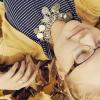Home
Tips & Tricks
Sony Tips
Sony a6400
Sony a6300
Sony a6000
Canon Tips
Canon M50 Mark II
Canon M50
Canon 6D Mark II
Canon 6D
Canon 7D Mark II
Canon 7D
Canon 90D
Canon 80D
Canon 77D
Canon 70D
Canon 60D
Canon T7 · 2000D
Canon T7i · 800D
Canon T6s · 760D
Canon T6i · 750D
Canon T6 · 1300D
Canon T5i · 700D
Canon T5 · 1200D
Canon T4i · 650D
Canon T3i · 600D
Canon T3 · 1100D
Canon T2i · 550D
Canon SL2 · 200D
Canon SL1 · 100D
Nikon Tips
Nikon D750
Nikon D500
Nikon D7500
Nikon D7200
Nikon D7100
Nikon D5600
Nikon D5500
Nikon D5300
Nikon D5200
Nikon D5100
Nikon D3500
Nikon D3400
Nikon D3300
Nikon D3200
Nikon D3100
Cheat Sheets
Sony Cheat Sheets
Sony a6300
Sony a6000
Canon Cheat Sheets
Canon M50 Mark II
Canon M50
Canon 6D Mark II
Canon 6D
Canon 7D Mark II
Canon 7D
Canon 90D
Canon 80D
Canon 77D
Canon 70D
Canon 60D
Canon T7 · 2000D
Canon T7i · 800D
Canon T6s · 760D
Canon T6i · 750D
Canon T5i · 700D
Canon T6 · 1300D
Canon T5 · 1200D
Canon T4i · 650D
Canon T3i · 600D
Canon T3 · 1100D
Canon T2i · 550D
Canon SL2 · 200D
Canon SL1 · 100D
Nikon Cheat Sheets
Nikon D750
Nikon D500
Nikon D7500
Nikon D7200
Nikon D7100
Nikon D5600
Nikon D5500
Nikon D5300
Nikon D5200
Nikon D5100
Nikon D3500
Nikon D3400
Nikon D3300
Nikon D3200
Nikon D3100


Comments
If you have an upper limit of ISO that is satisfactory on the noise, you might consider manually selecting ISO in sports mode, or switching to S mode, and setting an upper limit to the Auto ISO in the menu. If you switch out of Sports mode you'll also have to make sure you set your AF correctly, to continuous servo, and either single point or Dynamic area. if you're aiming at a specific player, and getting a silhouette, spot metering mode might work better.
If you're after single players, practice panning the camera to follow a player. You can often get a sharper shot at lower shutter speed with the background blurred by motion. Set your shutter mode to continuous, and fire off short bursts, as often in a series of three or four shots one of the middle ones will be sharper. It takes practice, especially to maintain focus, and may not work well if the player moves irregularly, but you can try.
If you do need to raise shadows or change exposure, always shoot in Raw mode. You can change exposure in post much more easily then, and change it back if you get it wrong. You probably won't be able to get rid of all the graininess in dark areas, but if possible get the exposure as close as possible in the camera, rather than in post processing. Results vary with the camera. On the D3200, you'll get better noise performance by putting the ISO right at the start than you will by raising exposure in post. On some newer cameras this is becoming less so, and in some you can underexpose to gain some dynamic range and then open shadows in post with less noise penalty. You can experiment with shadow recovery and exposure compensation to see what works best in your case.
For low light sports/action, I recommend you rent the Sigma 50-100mm f/1.8 (if you are close to the action) and the Sigma 70-200mm f/2.8 (if you are far away from the action), once or twice a year for an important event. This would allow you to capture wonderful low light action shots to remember it by.
Depending on what part of the world in which you live, there are online retailers that do this sort of thing. In the States, we have lensrentals.com and borrowlenses.com.